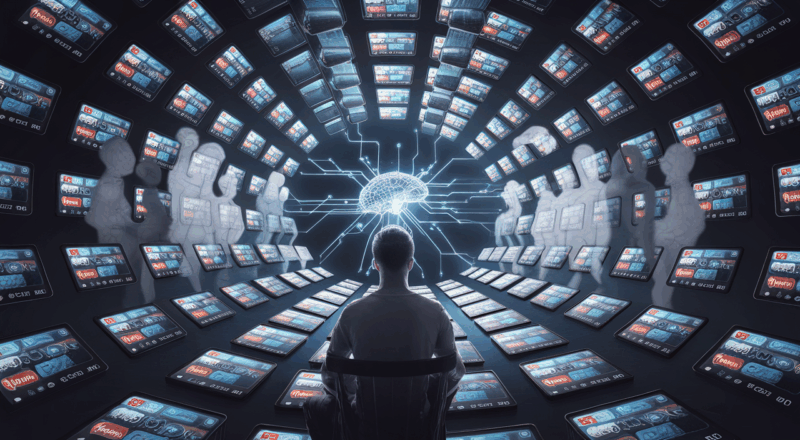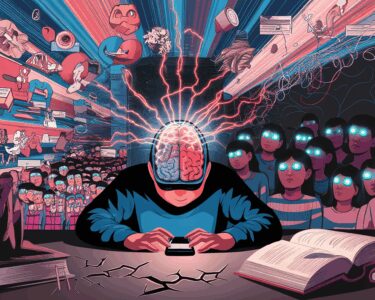The YouTube Loop Abyss represents a sophisticated system capturing viewer attention, resulting in over one billion hours of daily content consumption worldwide. Through autoplay features, personalized recommendations, and a powerful algorithm driving 70% of total watch time, YouTube has engineered an experience that transforms quick video checks into hours-long viewing marathons.
Key Takeaways
- YouTube’s autoplay feature removes natural breaking points, making it significantly harder for users to step away from the platform.
- The recommendation system creates a dopamine-driven experience similar to gambling, using variable reward schedules to keep viewers engaged.
- Users often enter a flow state or experience time blindness during extended viewing sessions, losing track of hours spent watching.
- Content creators enhance the loop effect through techniques like cliffhangers, series formats, and emotional storytelling.
- YouTube offers built-in features to help regain control, including “Take a Break” reminders, “Bedtime Reminders,” and options to disable autoplay.
Inside the YouTube Loop Abyss: A Billion Hours of Daily Viewing
I’ve seen firsthand how the YouTube Loop Abyss captures viewers’ attention through its clever design features and powerful algorithm. The platform’s massive reach extends to over 2 billion logged-in monthly users globally, creating an ecosystem where digital content consumption becomes addictive.
How the YouTube Loop Abyss Keeps You Watching
The Autoplay feature stands as the cornerstone of the YouTube Loop Abyss, automatically launching the next video after a brief countdown. This seamless transition removes natural breaking points, making it harder to step away from the screen. The platform’s sophisticated algorithm powers this continuous viewing experience by carefully selecting ‘Up Next’ videos that match your interests and viewing patterns.
The Algorithm’s Powerful Pull
The YouTube Loop Abyss thrives on its recommendation system, which drives an impressive 70% of total watch time. I’ve noticed how this algorithmic loop can trigger emotional responses, keeping users glued to their screens. The platform’s ability to predict and serve content that matches user preferences has created a situation where viewers collectively consume over 1 billion hours of content daily.
Here’s how the YouTube Loop Abyss maintains its grip:
- Personalized recommendations based on viewing history
- Seamless transitions between videos
- Auto-playing content that matches your interests
- Strategic placement of suggested videos
- Engagement-focused content selection
This powerful combination of features has transformed casual viewing into extended watching sessions. The addictive nature of algorithmic content makes it increasingly challenging for users to break free from the YouTube Loop Abyss. Just like other digital platforms, YouTube has mastered the art of keeping users engaged through its personalized content delivery system, turning quick video checks into hours-long viewing marathons.
Breaking Free from the YouTube Loop Abyss
The YouTube Loop Abyss captures millions of viewers daily through powerful psychological mechanisms that make it challenging to close that browser tab. I’ve seen how the platform’s design taps into our brain’s reward systems, creating an almost hypnotic viewing experience that can stretch for hours.
The Dopamine-Driven YouTube Loop Abyss
Each new video recommendation triggers a dopamine release in our brains, similar to what happens during gambling. This chemical reward makes the YouTube Loop Abyss particularly sticky, as each click promises fresh entertainment. Just like those who develop AI companion addictions, YouTube users can find themselves caught in a cycle of seeking digital satisfaction.
The platform’s recommendation system uses a variable reward schedule that keeps viewers glued to their screens. This unpredictability — not knowing if the next video will be amazing or just okay — creates the same psychological hook that makes slot machines so addictive. It’s similar to how people get caught up in endless AI voice loops, chasing that next perfect interaction.
The Flow State and Time Blindness Effect
When caught in the YouTube Loop Abyss, viewers often enter a trance-like flow state where time seems to disappear. This phenomenon shares similarities with how people develop emotional attachments to AI companions, losing track of hours spent in digital interaction.
Here’s what happens during extended viewing sessions:
- Decision-making abilities decrease as mental fatigue sets in
- Time awareness becomes distorted, leading to missed commitments
- Physical needs like sleep and exercise get pushed aside
- Social connections may suffer as viewing time increases
The average mobile viewing session now exceeds 40 minutes, partly because YouTube removes the cognitive load of decision-making. Much like the growing trend of AI voice obsession, this passive consumption becomes an easy escape from daily stresses.
This automatic play feature, combined with personalized recommendations, creates a perfect storm that keeps viewers watching. The platform’s algorithm learns from every interaction, fine-tuning its suggestions to match your interests, making each new video more tempting than the last.

Breaking Free from YouTube’s Algorithmic Grip
Understanding the YouTube Loop Abyss
I’ve seen how easy it’s to fall into the YouTube Loop Abyss, where hours slip away watching shorts, compilations, and top 10 lists. These quick-hit formats pack an emotional punch that keeps viewers hooked, similar to how AI voice trends capture attention through their engaging nature.
Content creators craft their videos with specific techniques to keep you watching: cliffhangers, series formats, and emotional storytelling that rivals the addictive pull of AI companionship platforms.
Taking Control of Your YouTube Experience
The YouTube Loop Abyss doesn’t have to control your time. YouTube offers several built-in features to help you regain control:
- ‘Take a Break’ reminders that prompt you to pause viewing
- ‘Bedtime Reminders’ to help maintain healthy sleep schedules
- ‘Time Watched’ dashboard for tracking daily and weekly usage
- Option to disable Autoplay in settings
I’ve found that combining these tools with personal strategies creates a more balanced viewing experience. Setting clear intentions before opening the app helps avoid mindless scrolling, much like establishing boundaries when forming relationships with AI companions.
External tools can provide additional support in managing your YouTube Loop Abyss tendencies:
- Screen time tracking apps
- Website blockers for scheduled breaks
- Timer apps for viewing sessions
- Content filters to limit distracting recommendations
By practicing mindful viewing, I’ve learned to actively choose content rather than letting the algorithm decide. This approach helps break the emotional pull that keeps viewers stuck in endless watching cycles, similar to how some people get caught in repetitive AI voice interactions.
The key to breaking free from the YouTube Loop Abyss lies in using these tools while maintaining awareness of how content is designed to keep you watching. By taking active steps to manage your viewing habits, you can transform your YouTube experience from a passive time-sink into an intentional activity that adds value to your day.

It’s surprisingly easy to lose hours to autoplay, tumbling deeper into a never-ending queue of videos before realizing how much time has passed.
Sources:
Google AI Blog – “ai.googleblog.com”
YouTube Official Press – “youtube.com/about/press/”
Pew Research Center
Bloomberg
The Verge
Wired
The New York Times







